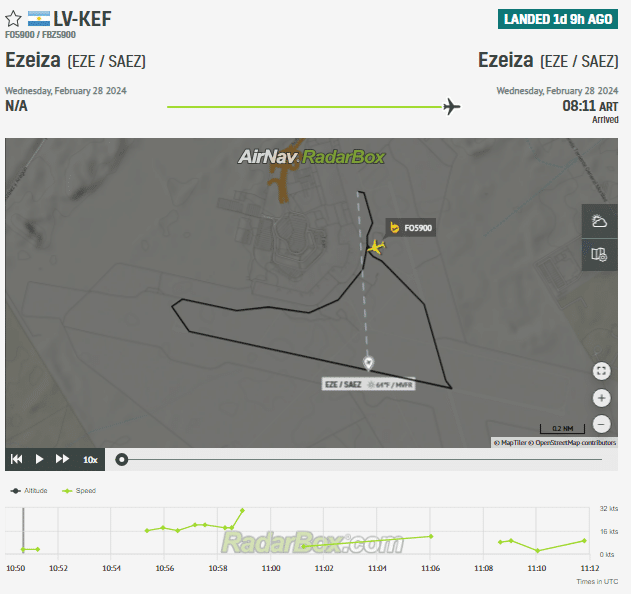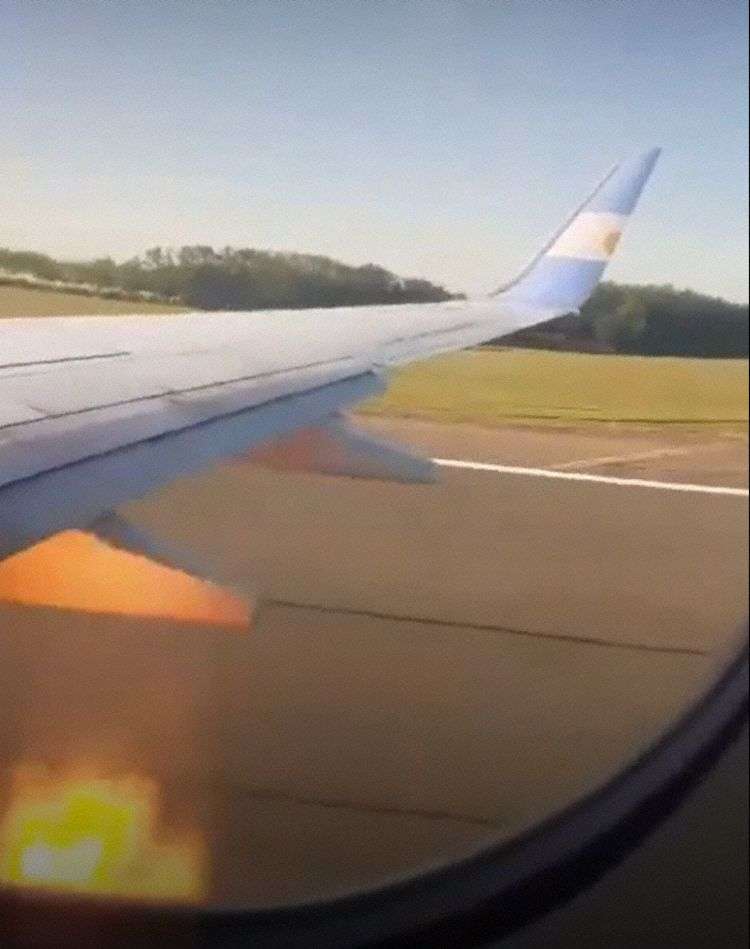Earlier this week, a flybondi Boeing 737-800 was involved in a bird strike in Ezeiza, Buenos Aires.
Imagery has come through of the incident in question, which resulted in a rejected take-off.
Without further ado, let’s get into it…
flybondi F05900: Buenos Aires-Rio de Janeiro…

flybondi flight F05900 is a routine scheduled flight between Ezeiza, Buenos Aires & Rio de Janeiro in Brazil.
LV-KEF was the aircraft involved in this particular incident.
As per data from Planespotters.net, LV-KEF is a 13.7 year old Boeing 737-800.
The aircraft started out life with Garuda Indonesia back in July 2010.
Furthermore, it was handed over to flybondi back in January 2023, so the aircraft has been in the fleet for just over a year.
F05900 attempted a departure from Ezeiza, Buenos Aires at around 0810 local time on February 28.
Upon hitting birds, the crew rejected the take-off and taxied back to stand following the incident.

The image above shows the moment that the bird strike caused an engine flame-out whilst on the runway.
Rejected Take-Off: Explained…

The crew onboard flybondi flight F05900 between Ezeiza, Buenos Aires & Rio de Janeiro were luckily able to reject the take-off.
Before the aircraft takes off, the crew set a series of take-off speeds called the following:
- V1 – Safe speed to reject takeoff.
- Vr – Rotation speed.
- V2 – The minimum speed that needs to be maintained up to acceleration altitude, in the event of an engine failure after V1.
In conclusion, it remains clear from this incident that the crew had come short of the V1 speed, which allowed the rejection.
However, if they passed V1, they would have been able to take-off still, but would have returned to the airport.
The Boeing 737-800 can operate with one engine as well, so things are extremely safe in this regard.
At the time of writing (29/2/24 @ 2030 UK time), LV-KEF remains on the ground.

Click the banner to subscribe to our weekly Emergencies and Incidents newsletter.

Click the photo to join our WhatsApp channel so then you can stay up to date with everything going on in the aviation industry!









